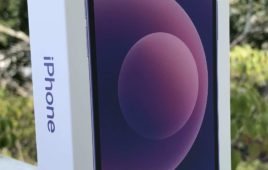Since last year’s launch of the Apple iPhone, a lot of the industry’s attention is focused around the user interface (UI). Sitting at the heart of that is a semi-little company based in Sweden called The Astonishing Tribe (TAT).
TAT delivers tools that allow manufacturers to differentiate their phones. As Hampus Jakobsson, vice president of business development and co-founder explained, TAT doesn’t write the novel, but it provides tools for the author to write a “fantastic” novel. Its technology is in models like the Samsung Instinct, which Sprint launched last week.
TAT was founded in 2002, with headquarters in Malmo, Sweden. It works with four out of the five biggest handset makers; clients include Sony Ericsson, Samsung, Motorola, TeliaSonera and Orange.
TAT is a member of the Open Handset Alliance, and as a result of the Google-led Android initiative, Jakobsson expects a lot more companies will put their names on phones – the companies could be any big brand, even one that’s better known for making sunglasses, where it’s all about brand and style. The same thing can be said of mobile phones. It’s already happened to some extent with models like the LG Prada.
TAT employs about 140 people, and about 40 are designers; others are engineers. But they’re all required more or less to be both right-brain thinkers and left-brainers, according to Jakobsson – or put another way, using the whole brain.
So why did it take a company like Apple to shake up the mobile phone industry and produce what’s arguably the most talked-about handset of all time? It’s not that Apple has better designers than handset makers, he said. The big difference between Apple and other companies is CEO Steve Jobs is, in the end, a designer, and nothing leaves Apple without his blessing. Most chief executives or vice presidents of phone makers or PC makers, for that matter, are engineers or management experts, not designers. As chronicled in books like “Sketching User Experience,” the design team that created great hits like the iPod was the same team that worked at Apple when it produced flops – when Jobs wasn’t around.
Meanwhile, TAT CEO Charlotta Falvin said TAT’s main competition is the internal software development within OEMs. TAT’s licensed technology is on an installed base approaching 200 million units worldwide, she said.
What about that name? The early founders of TAT couldn’t agree on one, so when it came time to sign papers establishing the business, they had to pick one. They grabbed TAT, which ended up being a perfect moniker for the company, which wants to both astonish people and work together as a tribe, Jakobsson said.




